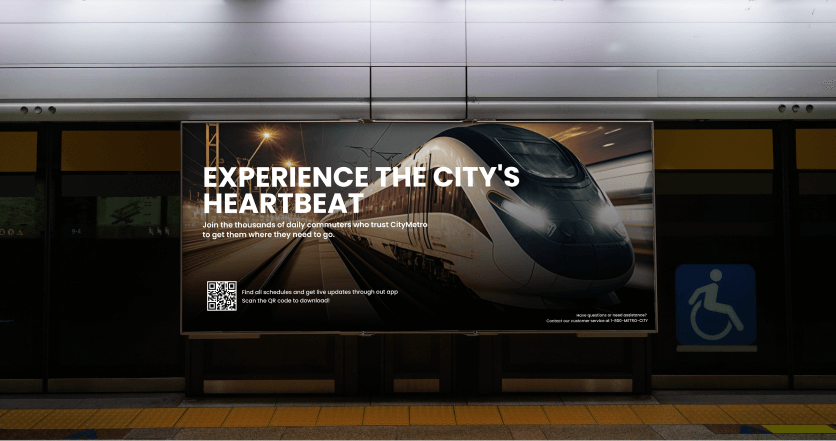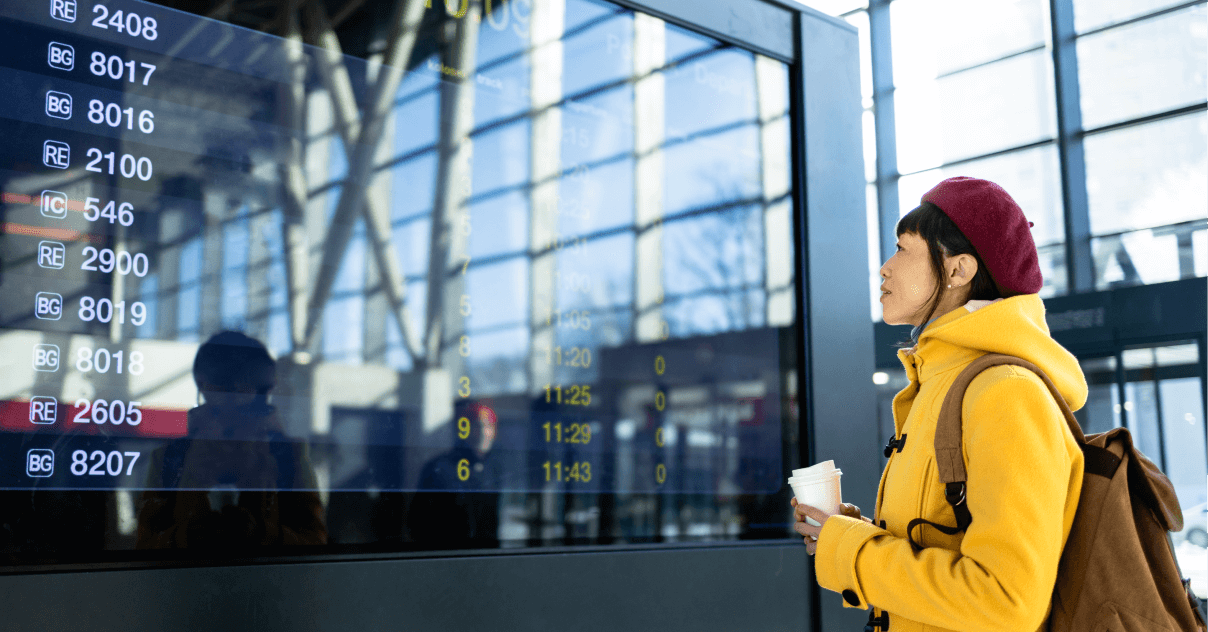When we travel around the world, we always seek an easy and enjoyable experience, no matter if it’s for business or leisure. But what makes a trip unforgettable? For many travelers, it’s not just sightseeing or the food. It’s how easily they can move through a place, find what they need, and feel connected right away. Today, smart technologies make it possible to deliver exactly what every traveler wants.
Digital signage is a type of technology that can significantly impact and transform the tourism industry, making travel a better and easier experience. It has the potential to reshape a visitor’s journey from the very start at the airport through their entire stay in the city by offering valuable information that may be hard to find for those who are not locals.
Digital signage, placed at strategic points across a city, from train stations to hotels and tourist information centers, serves a dual purpose. It offers the practical info travelers need, like maps or transport updates, while also sparking curiosity with local tips, hidden gems, and cultural events they might have otherwise missed.
Digital signage guides travelers from first arrival to full discovery of the city
Airports
Although your journey may begin in the skies, the real travel experience starts once you land. Arriving at an airport for the first time is confusing. Digital screens can bring the solution by showing information like baggage claim zones, public transport options, and city transit schedules, and help travelers find their way. Beyond logistics, displays can also showcase top attractions, promote local events, and even allow travelers to scan QR codes for downloadable city guides, reducing the time spent searching and helping visitors jump straight into their adventure.
Hotels
Hotels are the first destination when arriving in a new city and play an essential role in how the journey will evolve and how enjoyable the overall guest experience will be. Adding digital signage to a hotel in places like lobbies or elevators gives visitors easy access to practical information like breakfast hours, services the hotel might offer, or Wi-Fi passwords. At the same time, these screens show local attractions, current city events, or weather updates to ensure visitors have all the info they need to plan their next days with ease. Additionally, interactive kiosks can offer faster check-in without the need for staff assistance.
City wayfinding
Exploring a new city can be overwhelming, especially for first-time visitors. Interactive signage placed near plazas, metro stations, or bus stops offers real-time maps, step-by-step walking routes, and landmarks. Many displays can also include QR codes to open mobile navigation tools, allowing travelers to take the route with them. When these systems are synced citywide, they create a unified navigation experience that’s both consistent and reliable.
Cultural & local highlights
To truly enjoy a new city is to experience it as a local, and digital signage helps travelers discover hidden places. Apart from museums, galleries, and historical sites that promote current exhibitions and ticket availability, digital signage can also showcase ongoing festivals around the city. It can highlight local hidden restaurants and small businesses, helping travelers experience life like a local.
Real-time information
As most travelers are always out and on the run, installing outdoor digital signage screens with crucial information in real time can help their experience and safety. Displaying local news, safety information, and emergency alerts makes the city safer and keeps tourists always informed.
Accessibility
Creating an inclusive city means designing systems that everyone can use. Digital signage contributes to accessibility in several important ways. Content can be displayed in multiple languages, while screens support features like high-contrast visuals, large fonts, and simple icons to help users with visual or cognitive challenges. By offering clear, easy-to-understand guidance, digital signage helps ensure that all visitors feel welcome and informed regardless of age or ability.

Final thoughts
Most people travel to see a new place but also want to connect with its culture. But discovering what’s happening isn’t always easy. Many travelers miss out on concerts, exhibitions, or cultural festivals simply because the information wasn’t accessible at the right time or place.
Digital signage can temporarily replace a local guide by pointing out nearby attractions, sharing transport updates, highlighting neighborhood events, and offering wayfinding assistance. This helps make the visitor experience smoother and more engaging.
